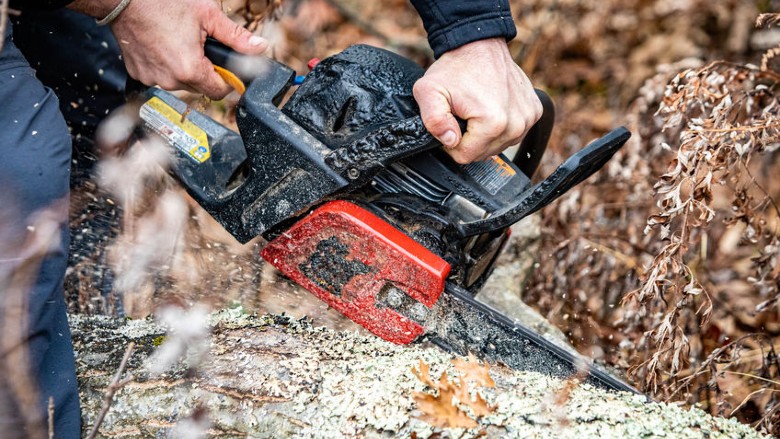
If you’re a homeowner, you may have found yourself in the position of wanting to cut down trees, clear brush, or cut up some firewood. For all these things and more, gas chainsaws can be a godsend.
Our list of the best gas chainsaws will show you some great options to help spruce up your front and back yard. Then when you’re finished, compliment your hard work by adding a beautiful garden bridge or relax in a new porch swing for top-notch satisfaction.

|
Amazon Customer Reviews
|
Price: $449.00 Shop at Amazon | Shop now Read our review |
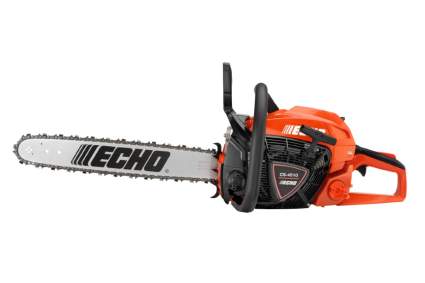
|
Amazon Customer Reviews
|
Price: $358.99 Shop at Amazon | Shop now Read our review |
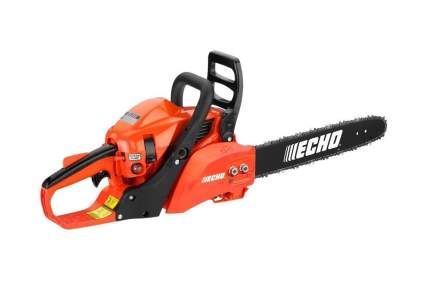
|
Amazon Customer Reviews
|
Price: $256.00 Shop at Amazon | Shop now Read our review |
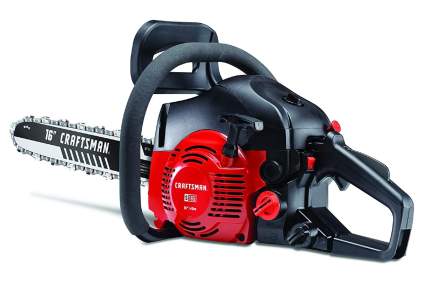
|
Amazon Customer Reviews
|
Price: $189.99 Shop at Amazon | Shop now Read our review |
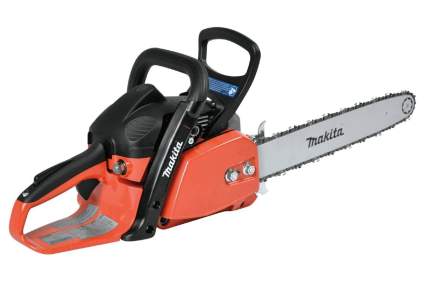
|
Amazon Customer Reviews
|
Price: $255.99 Shop at Amazon | Shop now Read our review |
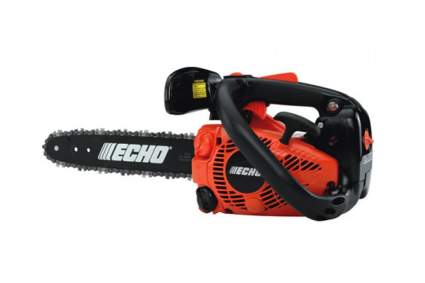
|
Amazon Customer Reviews
|
Price: $378.99 Shop at Amazon | Shop now Read our review |
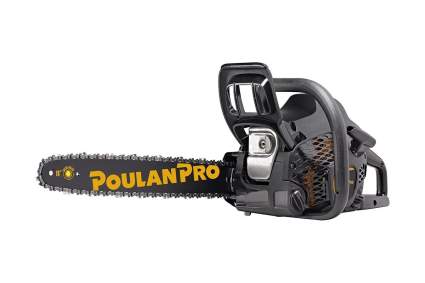
|
Amazon Customer Reviews
|
Price: $252.87 Shop at Amazon | Shop now Read our review |
-
1. Husqvarna 450 Rancher 20-inch 50.2-cc 2-Cycle Gas Chainsaw
Pros:- 3.2-HP X-Torq engine
- 20-inch bar while light weight and reasonably priced
- LowVib anti-vibration technology built-in
- Automatic oiler
- Great on fuel consumption and emissions
- Features air injection air-filtering cleaning system
Cons:- Pricer than other models
- Not as large as the 460 Rancher
- No warranty mentioned
It didn’t take long for the Husqvarna 450 Rancher to become one of my favorite gas-powered chainsaws. Every aspect of the chainsaw is top-notch. And it’s reasonably priced for a large 20-inch model.
The Rancher series is great for pretty much any yard work. Cleaning up downed trees, pruning branches, felling trees, and more, it’s got you covered. The initial ignition is a breeze thanks to Husqvarna’s effortless starting system. There is relatively low vibration thanks to the saw’s anti-vibration system. And the gas chainsaw’s 3.2-HP X-Torque engine is great on fuel consumption and emissions.
On top of that, the 450 Rancher features an automatic oiler so that lubrication is continually delivered for optimal safe performance. There’s the air injection air-filtering cleaning system which aids the engine’s longevity. A side-mounted tensioning system is also built-in for easy and quick adjustments while in the field. And at just over 11 pounds, you should be able to work for quite a while before arm fatigue becomes a factor.
For my money, the Husqvarna 450 Rancher is the best gas chainsaw I’ve used in 2022.
Find more Husqvarna 450 Rancher Gas Chainsaw information and reviews here.
-
2. Echo CS-4510 45cc 18-Inch Gas Chainsaw
Pros:- Spring-assist starter
- Dual-post chain brake for tougher durability
- Padded wraparound operations handle
Cons:- It's heavy
- More expensive than other saws on our list
- This isn't a beginner's saw
The mid-size Echo CS-4510 45cc 18-Inch Gas Chainsaw comes equipped with many features including a tool-less air filter cover, choke with fast idle, momentary stop switch, and spring-assist starter. The air injection removes dirt and debris to help save your air cleaner. A 3-point spring vibration reduction system helps to keep this beast steady while working in the field as well.
This gas chainsaw is powered by a 45cc professional-grade 2-stroke engine that will keep up with most any tree maintenance or yard clean-up products you have for it. The 18-inch bar and chain provide reliable performance and while on the high end of homeowner saws, the CS-4510 is easy to use. Once started by the spring-assist starter and the choke with automatic fast idle, this saw will roar to life quickly.
Echo is a big name in the chainsaw world and the CS-4510 is an excellent example of why that is. It’s a bit heavy but it’s a big saw with plenty of power. If you don’t have a lot of experience with running a gas chainsaw, there may be others on our list that may be better for you to get acquainted with. This saw comes with a one-year warranty as well.
Find more Echo CS-4510 45cc 18-Inch Gas Chainsaw information and reviews here.
-
3. Echo CS-310 30cc 14-Inch Gas Chainsaw
Pros:- Large enough for power, small enough to use up in trees
- 14-inch bar is perfect for general work
- Vibration and noise level is reasonable
Cons:- Start process may be cumbersome
- Heavy for a smaller saw
- Carburetor may need adjustment
The Echo CS-310 30cc 14-Inch Gas Chainsaw provides a near pro-grade experience for home use. Once reading through the included documentation and filling the gas and bar oil tanks, crank this sucker up and see if it doesn’t impress you with its incredible performance and power. For a saw this size, it will decisively make dozens of cuts with ease and still ask for more.
It’s a really nice option for anyone with a house with a yard and even a house with acreage. This 14-inch chainsaw is light enough to carry around, work over your head, or even climb trees with if that’s your thing (please do be careful). Perfect for trimming trees, brush, or hacking up some firewood, the Echo CS-310 is powerful enough for pro work while keeping it in check for the layperson who hasn’t worked as a professional arborist.
Find more Echo CS-310 30cc 14-Inch Gas Chainsaw information and reviews here.
-
4. Craftsman S165 42cc 2-Cycle 16-Inch Gas Chainsaw
Pros:- Adjustable auto-oiling system
- Three-point anti-vibration control
- 16-inch bar and chain are the perfect size for a homeowner saw
Cons:- EasyStart system requires some breaking in before it is truly easy
- This saw does not like ethanol
- Chain tension system takes some tweaking to get right
This Craftsman S165 42cc 2-Cycle 16-Inch Gas Chainsaw comes with an easy start ignition system and a three-point anti-vibration system that will have you slicing and dicing all the tree branches you need to be handled. It features a 16-inch chain bar that is a great size for any homeowner to use. The robust 42cc full-crank engine will provide greater power when you take it out for a morning’s worth of yard maintenance.
The starting system makes it easy to pull to bring the engine to life in seconds. The saw’s chain brake is inertia activated for safety while operating and stop the chain automatically. To help with the weight of this chainsaw, the chassis is made of a lightweight yet durable thick poly material that doesn’t affect power. Vibration is kept to a minimum and, along with the ergonomic padded handle, user fatigue is much less than other saws while increasing control of the saw.
A side-mounted tensioning system saves time and ensures that your chain tension stays consistent. The adjustable auto-oiling system provides just the right amount of lubricant on the chain but also allows the user to manually increase or decrease oil flow if you need it. Tool-free access to the spark plug and air filter is nice so you can get at the guts of this saw to maintain everything when you need to. This gas chainsaw comes with a heavy-duty case, 2-cycle engine oil, and a scrunch (screwdriver/wrench tool).
Find more Craftsman S165 42cc 2-Cycle 16-Inch Gas Chainsaw information and reviews here.
-
5. Makita EA3200SRBB 32cc 14-Inch Gas Chainsaw
Pros:- Compact design and only nine pounds
- Touch and stop single shut-off lever
- High power-to-weight ratio with 1.8HP
Cons:- Sprocket cover is a little too thin and flimsy
- Slightly expensive for a 14-inch saw
- Where's that Makita blue?
You might think Makita makes some well-built electric power tools but check out this piece of gas-powered machinery that will raise your eyebrows. The Makita EA3200SRBB 32cc 14-Inch Gas Chainsaw combines a high power-to-weight ratio with easier starts and less vibration for a full range of yard clean-up tasks. Its smaller size and lighter weight make for an excellent homeowner saw.
The 32cc engine delivers 1.8 HP and 12,800 RPM after starting up easily with the spring-assisted starter. Need to start when it’s really, really cold out? No worries. This chainsaw is engineered for efficient cold starting even when it’s in the teens or lower outside. Additional features include an easy-to-clean chain compartment for efficient clearing of chips, even when rip cutting, and an advanced vibration dampening system.
Find more Makita EA3200SRBB 32cc 14-Inch Gas Chainsaw information and reviews here.
-
6. Echo CS-271T 27cc 12-Inch Gas Chainsaw
Pros:- Excellent homeowner saw
- Light and reliable for working up high if needed
- Five-year consumer warranty
Cons:- Fuel hungry
- Keep in mind this is for tree limbing only
- Small filling points for gas and oil
Want some power of a big-time gas chainsaw but not the weight or size? Then take a look at the Echo CS-271T 27cc 12-Inch Gas Chainsaw. At just 12 inches, this bar and chain are perfect for cutting tree limbs and brush.
Folks cleaning up after a storm will have a true advantage with the CS-271T because it’s light enough to climb roofs and trees without having to lug a much heavier saw around. Overhead work is going to be a lot easier with this gas chainsaw. You can use this saw with either your left or right hand in a true one-handed fashion however it has handles for two-handled work as well.
It’s got power, convenience, ergonomics, and punches well above its weight. The Echo CS-271T is the gas chainsaw you want in your corner when dealing with the aftermath of severe weather. Plus, it has a five-year consumer warranty, too. Just buy this cute chainsaw already.
Find more Echo CS-271T 27cc 12-Inch Gas Chainsaw information and reviews here.
-
7. Poulan Pro PR4218 42cc 2-Cycle 18-Inch Gas Chainsaw
Pros:- Big time 42cc gas engine power
- Ideal for medium-duty storm cleanup and firewood cutting
- OxyPower engine provides power, lower emission levels and lower fuel consumption
Cons:- Packaging isn't the greatest; examine your saw after delivery
- You may have to adjust the carbureator
- It's a big saw so it's going to be heavy for overhead work
The Poulan Pro PR4218 42cc 2-Cycle 18-Inch Gas Chainsaw comes equipped with something Poulan Pro calls “OxyPower” technology which apparently means better fuel efficiency with more power and up to 70% fewer emissions. You’ll have to be the judge of that but this is an excellent chainsaw. 42cc and an 18-inch bar mean the PR4218 will get through several cords of wood or storm cleanup without breaking a sweat.
This saw features a spring-assist pull cord and a purge bulb to ensure fast, simple starts so you can get going with cutting through trees instead of messing with a 2-stroke engine. And if you think that this big saw is going to throw you around, hang on there, cowboy. The design of this chainsaw is complete with an advanced anti-vibration system to offer superior comfort and minimized fatigue.
The PR4218 has a superior air filtering system to help protect the air filter and provide better fuel efficiency. The gear-driven oiler will keep your bar and chain lubed up to reduce wear and maintenance. The cherry on top is the integrated storage compartment with a snap-lock cover to keep that scrench where you need it when you need it.
Find more Poulan Pro PR4218 42cc 2-Cycle 18-Inch Gas Chainsaw information and reviews here.
Do I Need a Gas Chainsaw?
I don’t use my chainsaw often but when the occasion calls for it (like when a freak winter storm or a hurricane downs trees in the neighborhood), it’s supremely good to have on hand. Chainsaws are excellent for slicing up fallen tree limbs or trimming up thick brush and loading up the resulting firewood in your utility wagon. If you don’t fall trees for a living, that’s okay; chainsaws come in a variety of different sizes and power sources depending on your needs and skill levels.
Most people who need a chainsaw for work around the yard will want one for knocking down trees on their property, cutting firewood, and general (or emergency) cleanup. For that, a chainsaw that measures around 14 to 16 inches with an appropriately sized motor makes the most sense.
What you have in mind to use your chainsaw for will be the determining factor for what you eventually purchase. Bigger isn’t necessarily better when it comes to chainsaws. Understanding the size of your workload will help you decide what you actually need.
You don’t need to be a lumberjill (or jack) to own and use a chainsaw but temper your enthusiasm and start slowly, especially if you have no experience. Downing a 30-foot tall pine tree is best left up to a professional crew. At the very least, consider taking a chainsaw safety class from your local community college.
What is the Difference Between Gas Chainsaws and Electric Chainsaws?
Gas-powered saws are typically large, powerful machines that feature a 2-cycle engine and require a mixture of fuel and gas along with some basic maintenance. Gas models are widely used in the timber industry since they’re portable, strong, and may have blades more than five feet in length.
That’s not to say that all gas-powered chainsaws are unwieldy behemoths. Smaller gas models are well-liked by do-it-yourselfers, too. The engines typically have great torque and get the job done no matter where it's needed.
Gas chainsaws have some challenges, however. The small 2-cycle engine needs to be primed before starting and the carburetor will require cleaning every few years or so. You also must mix oil and gas together for fuel, they’re louder than electric chainsaws, and they put out exhaust while in use.
In comparison, electric chainsaws have some really good amenities. Electric saws require virtually no maintenance, are quieter, generally more lightweight, and, when using a cordless variety, portable as well. One glaring problem with electric chainsaws is that after use, the chain oil tank must be emptied, or else it will leak everywhere.
But when it comes to raw cutting power, gas engines almost always beat electric models. If you want a larger chainsaw, you'll be able to find a gas version easily. Gasoline is still available pretty much anywhere you go so you won't have a problem sourcing fuel. And forget about tripping on an extension cord or waiting for batteries to charge when using a gas chainsaw.
What Size of Gas Chainsaw is Best?
The best chainsaw will be most effective with the right-sized bar (sometimes called a blade) for what you need it for. The bar size means the length of the chain bar and works in conjunction with the correct engine to work the best. The longer the chain, the more power the saw needs to do its job.
As you might expect, the longer the bar, the heavier the saw, and the more vibration you’ll have while using it. Get a saw that you’ll be comfortable with for a reasonable amount of working time. It’s no fun using a tool that wears you out right out of the gate.
Depending on what you need to cut through, your gas chainsaw bar should be slightly longer than the diameter of what you’re cutting. If you want to cut through a 14-inch trunk, use a saw with a 16-inch bar. You get the idea. This isn’t a hard and fast rule; you can use smaller saws to cut down larger things but it’ll take longer.
Small saws between eight to twelve inches are convenient and fun to use all day. When you’re trimming small trees and tree limbs, they’re great. You may need a larger saw for cutting down trees and slicing up firewood but as I stated above, the larger the saw, the more weight you will take on. Plan on a chainsaw that is around 14 to 16 inches for general use.
What Should I Know About Gas Chainsaw Safety and Maintenance?
Chainsaws, both gas and electric, are very, very dangerous. Learning to operate safely should be your number one priority. A safety feature included on gas chainsaws is a manual chain brake located between the grip handle and chain bar. This stops the chain from spinning with a quick flick of the wrist.
Also, make sure that the chain on your saw stops moving when you release the trigger. If the saw you’re looking at doesn’t sport these features, move on. You really don’t want to mess around with a chainsaw without those safety elements.
Many local community colleges and municipalities offer classes on how to use chainsaws and other power equipment safely. These classes can be in person or online. If you have little to no experience, this would be an excellent idea for you to consider. The folks who teach these classes will show you what to look for when purchasing a saw, what safety equipment to use and how to use it, and how to use the saw properly.
Every cut with a gas chainsaw should be made by using the bottom flat of the bar and pressing down firmly. Never, ever use the top flat and lift up. And until you get some experience, avoid using the tip of the chainsaw bar. This may cause kickback, where the saw jolts violently toward you when the tip makes contact with what you’re cutting.
Respect your chainsaw. This means wearing the right clothing while using one: long pants, closed-toe shoes, and long-sleeved tops. Wear work gloves, safety goggles, ear protection, and maybe even a face shield.
Gas chainsaws do indeed require more maintenance than electric models. Fuel must be mixed for the 2-cycle engine (usually a 50 gas:1 oil mix) and since those engines have many working parts including carburetor needles and fuel hoses, they can develop their own unique idiosyncrasies to get started.
That's not necessarily a bad thing and, in my case, I look forward to taking care of a machine each and every year. It's not overwhelming and I like the power a gas engine brings to the party.
Both gas and electric chainsaws require bar oil to make the chain turn smoothly in the bar’s groove without overheating. Oiling allows the saw to run effectively to cut fast and prevents the chain from wearing out. It also prevents the bar from burning because of the chain speed.
Make sure that the saw you’re looking at features an automatic oiler. This will continuously add oil to the bar during use. Make sure the bar oil tank is kept full. Unlike electric chainsaws, gas models do not require the bar oil tank to be emptied after every use.
You wouldn’t think the chain on a saw would change the length (it’s made of metal, after all). However, because of the force and heat involved while using a chainsaw, chains regularly stretch quite a bit. A new chain will stretch more than an old one as part of the breaking-in process. Your chainsaw bar will feature bolts to adjust the tension to account for this.
You must adjust the bar forward and back at times or else your chain may slip off the bar; that’s really not a good thing while using your saw. The nicer chainsaws have toolless systems to adjust quickly with hand-tightened knobs. Otherwise, you’re looking at a hex head wrench to keep things up to snuff.
Sharpening your chain is incredibly important each and every time you use your gas chainsaw. It’s not that difficult, especially with handy tools available now like this 2-In-1 Easy Sharpener from Stihl. You need to know what size chain your saw uses (the chainsaw manual should have this) so you get the right sharpening tool for the job.
I have a ritual after I use my chainsaw each time. After the saw has cooled down, I wipe down the bar and motor housing using a clean rag. I then adjust the bar tension, fill the bar oil reservoir, then sharpen the chain. It doesn’t take that long and is certainly less expensive than taking the saw in to be repaired if the maintenance isn’t taken care of.
One last thing: if you know you're going to be moving a large number of log rounds, consider making a timberjack part of your tool collection. This LogOX 3-In-1 Forestry Multitool will reduce strain on your back and arms when moving those bad boys into your log splitter. A simpler log hauler tool is available as well.